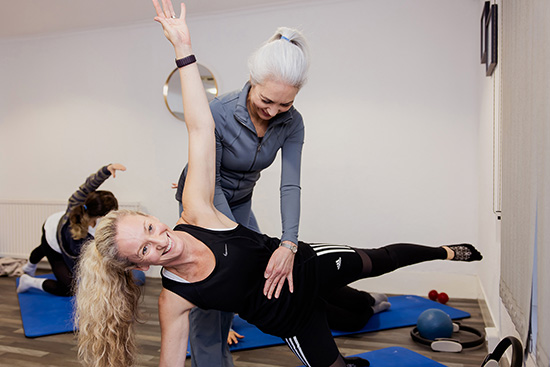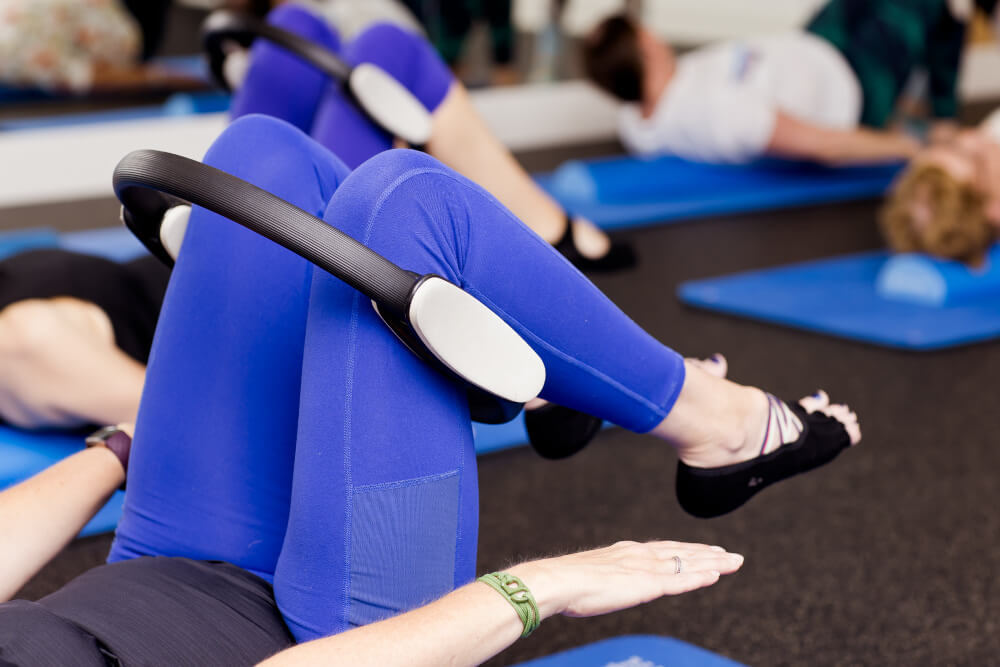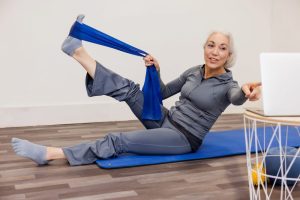Find a class
We have classes to suit all abilities. View our timetable to find a class.
“Physical fitness is the first requisite of happiness. Our interpretation of physical fitness is the attainment and maintenance of a uniformly developed body with a sound mind fully capable of naturally, easily, and satisfactorily performing our many and varied daily tasks with spontaneous zest and pleasure… With body, mind, and spirit functioning perfectly as a coordinated whole, what else could reasonably be expected other than an active, alert, disciplined person? Moreover, such a body freed from nervous tension and over-fatigue is the ideal shelter provided by nature for housing a well-balanced mind that is always fully capable of successfully meeting all the complex problems of modern living. Personal problems are clearly thought out and calmly met.” – Joseph Pilates
The practice of Pilates was started by Joseph Pilates in 1880. After struggling with his own health, his desire to be fit and healthy led him on a journey which resulted in the birth of Pilates. He became interested in Eastern and Western forms of exercise, which he melded together and formed into his own unique exercise practice. He was able to really put his methodologies to the test during WW1, when he worked in a hospital as an orderly. His patients were unable to walk, and he started to develop exercise practices and equipment to aid rehabilitation. Following the war, he emigrated to the USA where he opened his first body conditioning studio in New York in 1926. He wrote widely about his practice, and the word started to spread about Pilates.

![]()
The development and
worldwide spread of Pilates
Over the years Pilates has gradually evolved and integrated current biomechanical thinking. However, the roots of the technique are steeped in the philosophy and movement patterns designed by Joseph Pilates over 70 years ago. His classic exercises are still taught alongside their modified versions.
It was Alan Herdman who first introduced Pilates to the UK in 1970. He had studied with Carola Trier and Bob Fitzgerald, two teachers who were trained by Joseph Pilates himself. Alan worked with many actors, dancers and singers, and the word began to spread amongst the medical community, which began recommending Pilates to patients struggling with chronic pain and injuries.
Pilates has since grown in popularity and has spread across the globe to become a worldwide phenomenon.
The benefits of Pilates
- Better flexibility. Pilates stretches and elongates muscles, allowing you to gain flexibility without the danger of injury.
- Joint health. Pilates stimulates the production of synovial fluid, lubricating joints to loosen them up.
- Toning and definition. Work towards a toned, lean body shape with muscle definition.
- A calmer mind. Pilates is known to be very therapeutic, calming the mind and helping to relieve stress.
- Better balance. Practice makes perfect – the more you work on your balance, the more it will improve.
- Strength. Pilates works to strengthen your body and build muscle from your core, giving a greater range of motion.
We would love to share our expertise with you. Find out more about our Pilates classes



